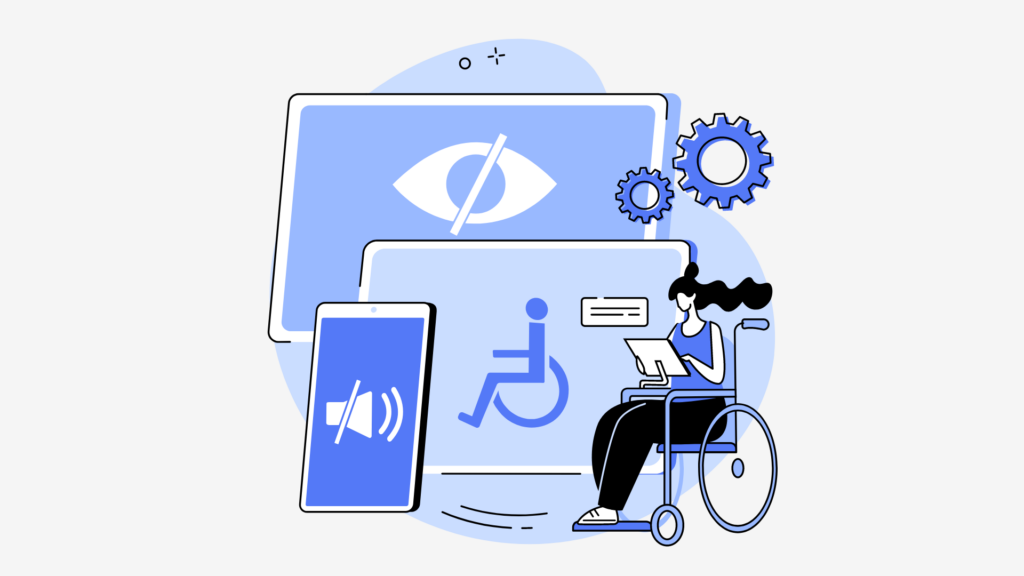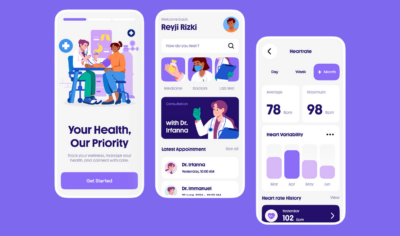
The Developer-First Approach: Why Prioritizing DX is the Key to Success in 2024
In the ever-evolving landscape of software development, where innovation races against deadlines, a new philosophy is taking center stage: the Developer-First Approach. This approach prioritizes Developer Experience (DX), recognizing that happy and productive developers are the backbone of successful software creation.
This article delves into the core principles of the Developer-First Approach, explores the benefits of prioritizing DX, and equips you with actionable strategies to implement it within your organization. By the end, you’ll understand why a Developer-First mindset is no longer a fad, but a crucial strategy for achieving success in the competitive software development landscape of 2024 and beyond.

Table of Contents
What is the Developer-First Approach?
The Developer-First Approach flips the traditional development paradigm on its head. Instead of prioritizing features and functionality solely from a business or user perspective, it emphasizes creating a development environment that empowers and excites developers. Here’s the core principle:
Developers are the Engine of Innovation
They are the ones who translate ideas into reality, breathing life into software products. By prioritizing their well-being and experience, you unlock their full potential for innovation and problem-solving.
This approach translates into a focus on several key aspects:

- Modern Tools and Technologies
Equipping developers with the latest tools and technologies empowers them to work more efficiently and creatively. This includes leveraging cutting-edge languages, frameworks, and development environments.
- Simplified Workflows and Processes
Streamlining workflows and processes eliminates unnecessary friction and frustration for developers. This includes implementing automation, clear documentation, and well-defined coding standards.

- Supportive and Collaborative Culture
Fostering a culture of open communication, collaboration, and knowledge sharing allows developers to learn from each other and thrive. This includes encouraging code reviews, pair programming, and hackathons.
- Focus on Developer Happiness
Creating a work environment that values developers’ well-being leads to increased morale, motivation, and ultimately, better software. This includes offering competitive compensation, flexible work arrangements, and opportunities for professional development.
Why Prioritize DX in 2024?
The benefits of prioritizing DX are far-reaching and demonstrably positive for businesses. Let’s explore some key reasons why a Developer-First Approach is crucial in 2024:

- The War for Talent
The demand for skilled developers continues to outpace supply. By prioritizing DX, you create an attractive work environment that retains top talent and attracts new recruits. In a competitive job market, a Developer-First approach acts as a magnet for the best minds in the industry.
- Faster Time to Market
Happy and productive developers work faster and more efficiently. Clean code, streamlined workflows, and a focus on automation all contribute to a faster development cycle, allowing you to get your product to market quicker and capitalize on fleeting market opportunities.

- Higher Quality Software
When developers have the tools and support they need, they can focus on writing clean, maintainable, and bug-free code. This translates to fewer errors, a more stable product, and a better user experience.
- Increased Innovation
When developers are empowered and excited about their work, they are more likely to come up with innovative solutions and creative approaches to problems. This fosters a culture of continuous improvement and leads to the development of groundbreaking features and functionalities.
- Improved Business Outcomes
Ultimately, the benefits of DX translate into improved business outcomes. Faster time to market, higher quality software, and a team of happy and productive developers all contribute to increased revenue, market share, and customer satisfaction.
Putting the Developer-First Approach into Action: Practical Strategies
Now that you understand the importance of DX, let’s explore some actionable strategies you can implement to cultivate a Developer-First environment within your organization:

Automate Repetitive Tasks
Free your developers from tedious and repetitive tasks by implementing automation tools. This could include automating build processes, code deployments, and testing procedures.
Simplify Your Codebase
Maintain a clean and well-documented codebase. This includes enforcing coding standards, conducting regular code reviews, and refactoring code when necessary. A clean codebase is easier to understand, maintain, and modify, leading to faster development cycles and fewer bugs.
Promote Open Communication and Collaboration
Encourage open communication and collaboration among developers. This can be achieved through regular team meetings, code reviews, pair programming sessions, and the creation of knowledge-sharing platforms like internal wikis or forums.
Empower Developers with Decision-Making
Involve developers in key decision-making processes. This could include decisions about the tools and technologies used, the architectural choices made, and the overall direction of the project. Feeling valued and heard will boost developer morale and ownership of the project.

Provide Opportunities for Professional Development
Invest in the professional development of your developers. Offer them opportunities to attend conferences, workshops, and training programs to stay up-to-date on the latest trends and technologies. This not only benefits individual developers but also keeps your team at the forefront of the industry.
Measure and Track Developer Satisfaction
Regularly measure and track developer satisfaction through surveys, feedback sessions, and one-on-one meetings. This will help you identify areas for improvement and ensure your Developer-First initiatives are having a positive impact.

Lead by Example
Management buy-in is crucial for the success of any initiative. Leaders need to champion the Developer-First approach and demonstrate its importance through their actions. This could involve participating in hackathons, attending developer meetups, and advocating for developer needs.
Celebrate Successes
Recognize and celebrate the achievements of your developers. This could be done through public recognition, team bonuses, or simply offering words of appreciation. Highlighting accomplishments fosters a positive and motivating work environment.
Building a Developer-First Culture
While implementing the strategies above is a great start, building a truly Developer-First culture requires a shift in mindset. Here are some key aspects to consider:
Focus on Outcomes, Not Micromanagement
Trust your developers to deliver results and avoid micromanaging their work. Set clear expectations and goals, but give them the autonomy to achieve them in their own way.
Embrace Failure as a Learning Opportunity
Failure is inevitable in software development. Instead of punishing mistakes, foster a culture of learning from them. Encourage developers to experiment, take calculated risks, and share their learnings with the team.
Promote Work-Life Balance
Recognize the importance of work-life balance for developer well-being. Offer flexible work arrangements, encourage breaks, and avoid creating a culture of overwork. Burned-out developers are less productive and more likely to leave for greener pastures.
Bridging Developer-First Approach with Design
Design plays a pivotal role in software development, influencing not only the aesthetics but also the functionality and usability of a product. Integrating the developer-first approach with design involves several key considerations:
Collaborative Design Tools

Embracing developer-friendly design tools that seamlessly integrate with coding environments can enhance collaboration between designers and developers. Tools like Figma, which allow for real-time collaboration and code-based design, enable designers to work alongside developers more effectively.
For instance, Airbnb’s design team utilizes tools like Figma for collaborative design. Designers and developers work together in real-time, allowing developers to provide feedback on design prototypes and ensure that designs are feasible to implement.
Component-Based Design Systems

Adopting a component-based design system aligns with the developer-first approach by promoting modularity and reusability. Design systems like Material Design and Bootstrap provide developers with readily available components and guidelines, streamlining the implementation process and ensuring consistency across the application.
As an example, Airbnb’s DLS consists of a comprehensive library of reusable components, UI patterns, and design guidelines. These components are meticulously designed to be modular and easily adaptable, facilitating consistency and efficiency across Airbnb’s web and mobile platforms.
Design System as Code
Treating design systems as code facilitates version control, automation, and integration with existing developer workflows. By representing design elements and styles in code format (e.g., using CSS-in-JS or design tokens), developers can easily incorporate them into their projects and ensure design consistency across platforms and devices.
As an illustration, Airbnb’s design tokens are defined using a tool called Theo, which generates platform-specific code snippets for developers. By representing design elements as code, developers can seamlessly integrate design changes into their codebase, ensuring design consistency and reducing the likelihood of discrepancies between design and implementation.
Enhancing UX with a Developer-First Mindset
A seamless user experience is the cornerstone of a successful product. Integrating the developer-first approach with UX design involves the following strategies:
Performance Optimization

Prioritizing performance considerations during the design phase, such as optimizing images, reducing JavaScript payloads, and implementing lazy loading, aligns with the developer-first approach’s focus on efficiency and speed. This results in faster load times and smoother interactions, ultimately enhancing the user experience.
Google Chrome, the widely used web browser, exemplifies how a developer-first mindset can enhance user experience. Google Chrome’s development team continuously works on optimizing the browser’s performance. This includes implementing technologies like V8 JavaScript engine optimizations, which improve the rendering speed of web pages and enhance overall browsing experience.
Accessibility by Design

Embedding accessibility principles into the design process ensures that the product is inclusive and usable by all individuals, including those with disabilities. By considering accessibility requirements from the outset and collaborating closely with developers to implement accessible features, designers can create more inclusive experiences.
Google Chrome incorporates various accessibility features to ensure that it is usable by individuals with disabilities. For example, Chrome offers high contrast mode for users with visual impairments and supports screen readers like VoiceOver and NVDA for users who are blind or have low vision.
User-Centric Testing and Feedback Loops

Incorporating user feedback loops and usability testing into the development cycle allows designers and developers to iterate based on real-world usage patterns. By prioritizing user needs and preferences, teams can refine the product iteratively, ultimately delivering a more user-friendly experience.
Google Chrome regularly conducts usability testing and collects feedback from users to inform product improvements. Through features like the Chrome User Experience Report and user surveys, the development team gathers insights into user behavior and preferences, allowing them to prioritize enhancements that directly impact user experience.
The Developer-First Approach: A Long-Term Investment
The Developer-First Approach is not a quick fix, but a long-term investment in the success of your organization. By prioritizing DX, you create an environment that attracts and retains top talent, fosters innovation, and ultimately leads to the development of high-quality software that meets the needs of your users.
In today’s competitive landscape, prioritizing DX is no longer optional, it’s essential. By embracing the Developer-First philosophy and implementing the strategies outlined above, you can unlock the full potential of your development team and propel your organization towards success in 2024 and beyond.
By continuously adapting and evolving your Developer-First approach, you can ensure that your development team remains happy, productive, and at the forefront of innovation.
Take your company to the next level and get results with our world class user experience, interface design and implementation.
Get a FREE 30 min Strategy Session

Related posts
Prototyping: A Startup Founder’s Secret to Success
We’ve had so many grass-root startups come up to us with an extraordinary product idea but don’t know where to […]
The Correct Way to Embed Accessibility in Your Design Process
No fancy introduction – 15% of the world’s population equivalent to more than 1 billion people live with some sort […]
Creative product design that gets results
Take your company to the next level with world class user experience and interface design.
get a free strategy session


